Agra Fort – Agra Fort is a historical fort in the city of Agra in India. It served as the Mughal emperors’ primary residence until 1638, when Delhi became the capital city. A UNESCO World Heritage Site is the Agra fort. It is approximately 2.5 kilometers northwest of its more well-known brother, the Taj Mahal. A walled city is a more accurate description of the fort.
The victorious Babur remained in Ibrahim Lodi’s palace in the fort after the First Battle of Panipat in 1526. Later, he added a baoli to it.1530 saw the inauguration of Humayun, his successor, at the fort. Sher Shah Suri defeated him at Bilgram in 1540. The Suris held on to the fort until 1555, when Humayun took it back. Hemu, the general of Adil Shah Suri, retook Agra in 1556 and pursued the governor who had fled to Delhi, where he met the Mughals at the Battle of Tughlaqabad. Agra Fort’s Sheesh Mahal: The effect that is create when candles are lit in Sheesh Mahal, Agra Fort.
Agra Fort
In 1565, Emperor Akbar commissioned the construction of a massive red sandstone fort on the Yamuna River. Shah Jahan, his grandson, added to the structure. A 21.4 m-tall fortification wall surrounds the semicircle-shaped fort. The fort was built primarily for use by the military; It still has portions reserve by the Indian Army. After his son Aurangzeb took power in 1658, it was transform into a palace and used as a glide prison for eight years. A maze of buildings, including vast underground sections, make up the fort. The only way in is through the south-facing Amar Singh Gate.
From here, a straight path takes you up to the enormous Moti Masjid. The open Diwan-e-Aam, where Shah Jahan listen to people’s petitions and issues, is just before this. To the left of the Diwan-e-Aam throne is a small staircase that leads to a large courtyard. The Nagina Masjid, made of white marble, can be found to the left. A beautiful mosque in Agra Fort is Nagina Masjid. It’s close to Moti Masjid.
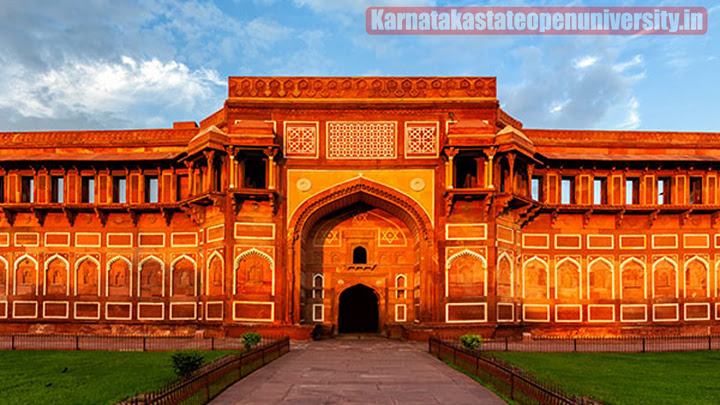
Agra Fort Details
| Article for | Agra Fort Agra All you need to Know In 2024 |
| Agra Fort Agra All you need to Know In 2024 | Click Here |
| Category | Travel |
| Official website | Click Here |
click here:- Junagarh Fort Bikaner All you need to Know In 2024
After the Taj Mahal, the Agra Fort is now one of India’s best forts and a popular tourist destination in Agra. The fort was designated a UNESCO World Heritage Site in 1983. At the Amar Singh Gate, you can buy tickets to enter the fort and rent audio guides from a booth inside the entrance. Near the fort is the Sadar Bazaar, one of Agra’s most popular shopping destinations.
History
Did you know that the Chauhan Rajputs originally owned this Agra fort, which was originally a brick fortress? Historians note that Ibrahim Lodhi moved to Agra and lived in the fort after the First Battle of Panipat in 1526. Babur, the first Mughal ruler, conquered him and killed him. He then took control of the fort and built a Baori, also known as a stepwell, inside of it.
At the point when the stronghold went under the control of Akbar, he chose to make it his capital. However, the fort was deteriorating and losing its splendor at the time. As a result, Akbar rebuilt the fort using bricks in its core and red sandstone on its exterior. It took the tenacious and difficult work of 1,444,000 manufacturers for 8 long years to finish the development of this stronghold in 1573.
Even though Akbar is credited with building the Agra Fort, Shah Jahan, Akbar’s grandson, built it into the shape it is today. He rebuilt palaces and mosques with white marbles after razing numerous fort buildings. After the battle of Samogarh in 1658, Aurangzeb, Shah Jahan’s son, took control of the fort and imprisoned his father there for eight years until his death.
The fort has been seized and pillaged by numerous emperors and rulers since Shah Jahan’s death. The British took control of the Agra Fort in 1803, during the Second Anglo-Maratha War, and gave it to the Indian government after independence.
Agra Fort Architecture
The extravagant Agra Fort is constructed of red sandstone and marble in the Mughal style. The fort is enclose by massive red sandstone double-battlement walls, which form a semicircle when seen from above. These walls have a 70-foot height and a circumference of about 2 kilometers. Delhi Gate, Amar Singh Gate, Hathi Pol Gate, and Ghaznin Gate are the fort’s four entrances. Of these, the Delhi Door is the biggest and was utilized as Akbar’s conventional entryway. The Amar Singh Gate is the only way for visitors to enter the fort.
This fort has beautiful halls, magnificent mosques, and magnificent rooms. Public and private halls known as Diwan-i-Am and Diwan-i-Khas, royal pavilions that house masjids, marble royal baths, a mirror palace known as Sheesh Mahal, and courtrooms are among the fort’s main structures and monuments. It is thought that the fort once contained more than 5,000 structures and monuments. Nevertheless, only a dozen of these survived.
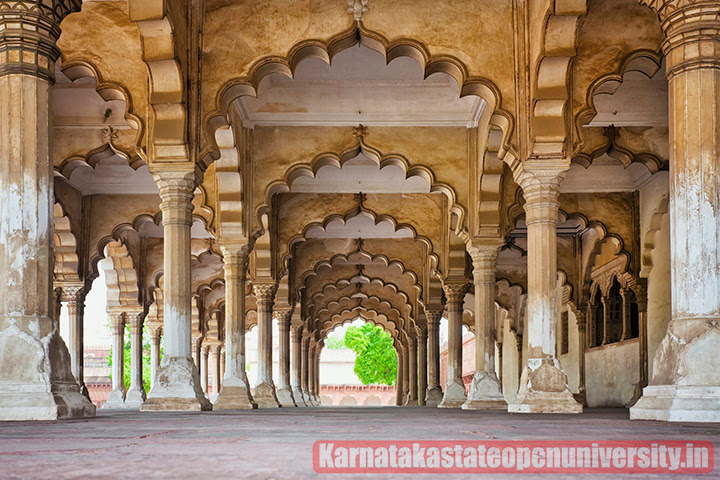
Agra Fort Light and Sound Show
The Government of UP organizes an evening light and sound show at the fort top. The light and sound show at the Agra Fort takes you on a visual journey through that its illustrious past of end. Counted among the best light and sound shows in India, that is one of the top attractions in Agra Fort.
- Timings: 30 minutes after sunset; every day in Fort
- Shows: Hindi and English
- Tickets: Rs 70 for Indians; Rs 200 for foreigners; Rs 40 for Indian students.
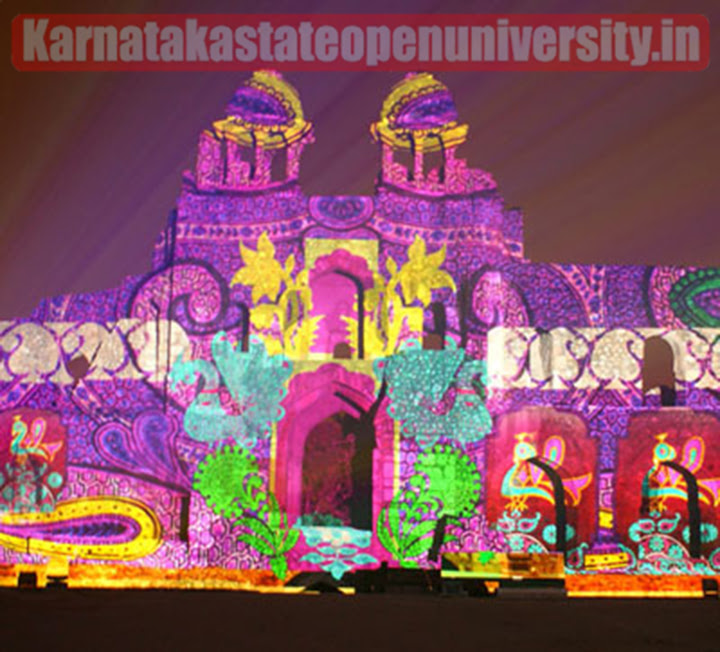
check:- Chitradurga Fort Karnataka All you need to Know In 2024
Things to See in Agra Fort
The fort comprises several palaces, halls, and other monuments built at different points of time in history. The major things to see in Agra Fort include this:
- Jahangir Mahal, the red sandstone palace built for Jahangir by his father Akbar made
- Jahangir‘s Hauz, the monolithic tank or bathtub make for Jahangir
- Bengali Mahal, the palace of Akbar which is said to have many secret underground passages in this mahal
- Khas Mahal, a white palace built by Shah Jahan featuring floral etchings and Jaali-style windows. The palace is position such that it gives you a distance view of the Taj Mahal.
See in the Fort
- Anguri Bagh or the Garden of Grapes, a garden built by Shah Jahan in front of Khas Mahal.
- Akbari Mahal, the palace where Akbar spent the last years of his life end
- Sheesh Mahal, a mirror palace made by Shah Jahan that features tiny glass-mosaic decorations.
- Babur’s Baoli, a Baoli or stepwell. This was the first modification made to the fort by Babur.
- Shahjahani Mahal, a white marble palace featuring an octagonal tower, side rooms, and a large hall in this mahal
- Musamman Burj, an octagonal building with a clear view of Taj Mahal. This is the place where Aurangzeb imprison his father, Shah Jahan, who spent 8 years of his life watching his wife’s memorial from his distance.
- Nagina Masjid, a mosque built for the ladies. That is said that below the mosque was the Mina Bazaar, where the epic romance between Jahangir and Nurjahan blossom.
- Macchi Bhavan, a large terrace with hallways that it connect to various chambers of the fort
- Ghaznin Gate, a gate that originally belong to the Tomb of Muhmud of Ghazni and was brought to the fort during the rule of British army.
- Diwan-i-Khas, the hall of private audience with tall arched doorways made of white marble make attractive. The renowned Peacock Throne of Shah Jahan with the famous Kohinoor diamond used to be kept here before it was shifted to Delhi.
- Diwan-i-Am, the hall for public audience make by Shah Jahan
- Moti Masjid aka the Pearl Masjid, a mosque which is currently not accessible to the public. The private shrine of Shah Jahan, namely Mina Masjid, is situate close to the Moti Masjid of.
Lesser known facts about Agra Fort
- In 2004, the Agra Fort had won the Aga Khan Award for Architecture and to commemorate the win of, a special stamp was issue by Indian Post.
- The Agra Fort features in The sign of the four, a Sherlock Holmes mystery novel written by Sir Arthur Conan Doyle of.
- In 1638, when Shah Jahan decided to move from Agra to Delhi, he decide to build the Red Fort taking inspiration from Agra Fort design.
Attractions near Agra Fort
The significance of Agra Stronghold is frequently eclipse by the Taj, however this one-time home of the Mughals has its very own appeal. Are you ready to explore this magnificent Agra fort and see the many layers of history etched in stone now that you know everything there is to know about it?
Fatehpur Sikri
A day trip from Agra to Fatehpur Sikri, the Mughal Empire’s pride, can take you there. This was establish near the sixteenth century which was made from red sandstone. One of the finest examples of Mughal architecture can be seen in this location, which is now a UNESCO world heritage site. Other attractions within Fatehpur Sikri include the palace of Jodha Bai, the Jama Mosque, the Buland Darwaza, and a Salim’s Tomb.
Distance from Agra Fort: 37.6 Kms
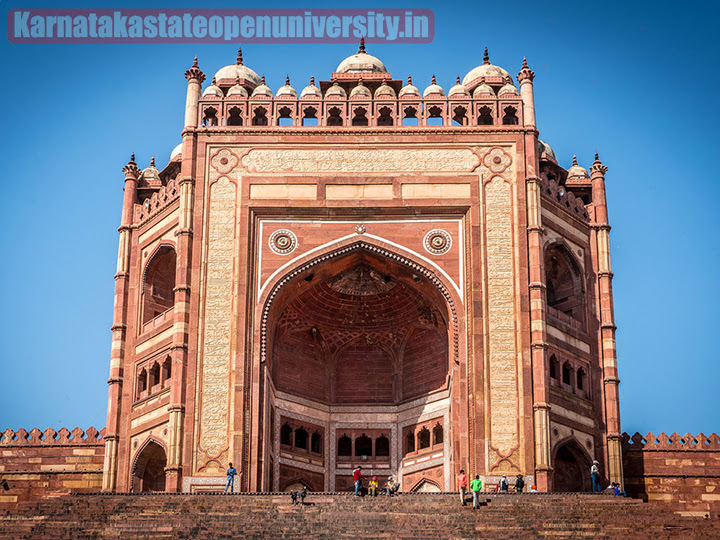
Taj Mahal
In addition to being one of the world’s seven wonders, the Taj Mahal is also regard as a love symbol. This monument, which was construct by the well-known Mughal emperor Shah Jahan for his belove wife Mumtaz Mahal, continues to draw visitors from all over the world. The construction of this magnificent structure began around the year 1631 and took nearly 17 years to complete. This bizarre location is regard as the pinnacle of beauty and has serve as a source of inspiration for numerous poets and artists.
Location: Dharmapuri, Forest Colony, Tajganj, Agra, Uttar Pradesh 282001
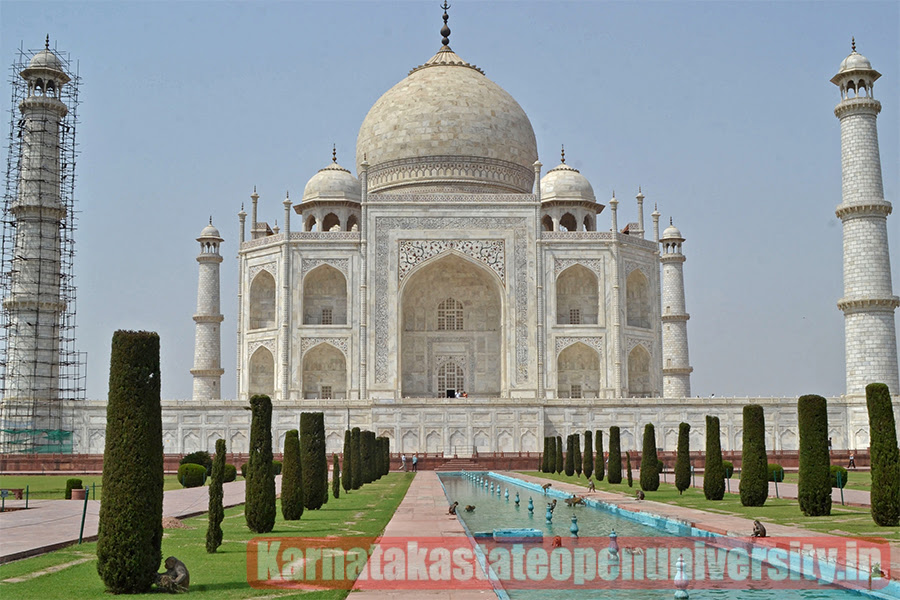
Distance from Agra Fort: 2 Kms
Sikandra
Sikandra is a town on the outskirts of Agra that is famous for being the final resting place of Akbar. The Tomb of Akbar, which was built between 1605 and 1618, is this location’s main draw. In contrast to other monuments that face the Masjid of Mecca, this tomb was built facing the sun and is surround by the Mughal garden. Sandstone and marble were use to build the main structure of this tomb.
Distance from Agra fort: 14.2 Kms
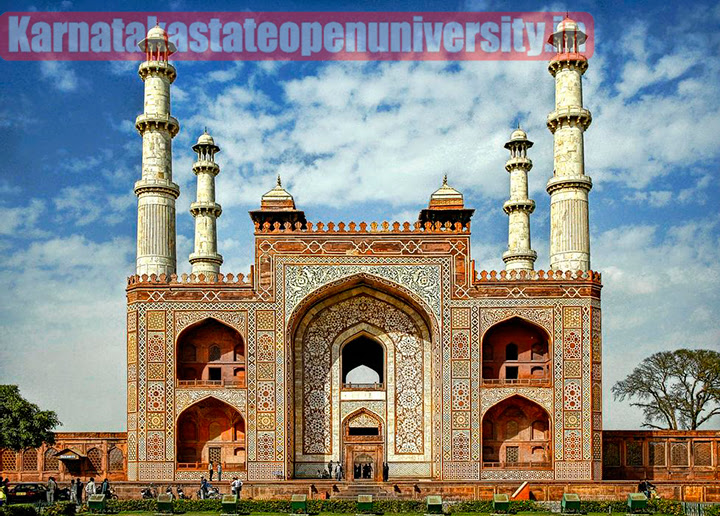
check:- Jaisalmer Fort: Golden Fort of Rajasthan All you need to Know In 2024
Best time to visit Agra Fort
The fort is accessible throughout the entire week. However, when planning your trip to Agra, you should take the weather into account because you won’t be able to take in as much. Therefore, the best times to visit the Agra Fort are from November to February, when the weather is dry and less hot.
Reviews
In the Indian city of Agra, there is a historical fort known as Agra Fort. It served as the Mughal emperors’ primary residence until 1638, when Delhi became the capital city. A UNESCO World Heritage Site is the Agra fort. It is approximately 2.5 kilometers northwest of its more well-known brother, the Taj Mahal. Agra Fort is a majestic structure made of sandstone that was made as an ode to the splendor of the Mughal empire and was made by Mughal emperor Akbar in 1565 AD. Enveloping inside its 2.5-km-long nook walls a staggering royal city, the stronghold is mold like a bow, its eastern wall flank by Waterway Yamuna.
Agra Fort, also known as Red Fort, is a massive red sandstone fortress built in the 16th century and situate on the Yamuna River in the historic city of Agra, which is in north-central India and west-central Uttar Pradesh. The fort is made up of a number of palaces, halls, and other monuments that were built at different times in history. The most important sights in Agra Fort are: Jahangir Mahal is a red sandstone palace that Akbar, Jahangir’s father, built for him. The monolithic tank or bathtub that Jahangir commission to be called his Hauz.
Related Posts:-
Chittorgarh Fort: A epic tale of love, courage and Sacrifices All about History In 2024
Amer Fort Jaipur All you need to Know In 2024

